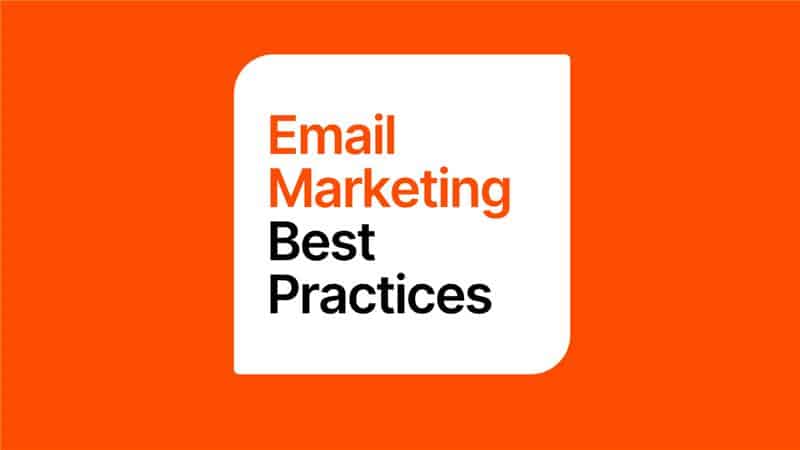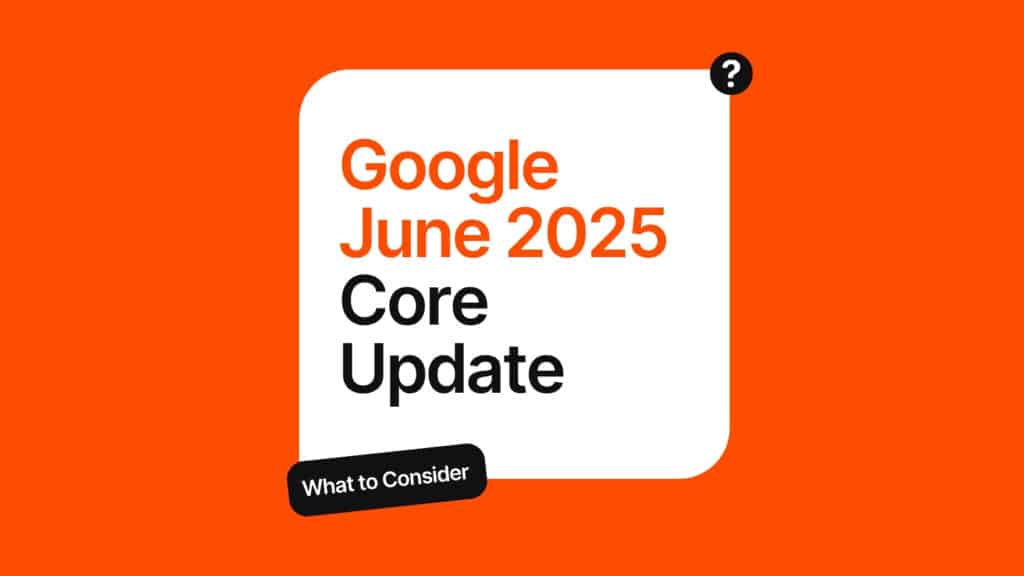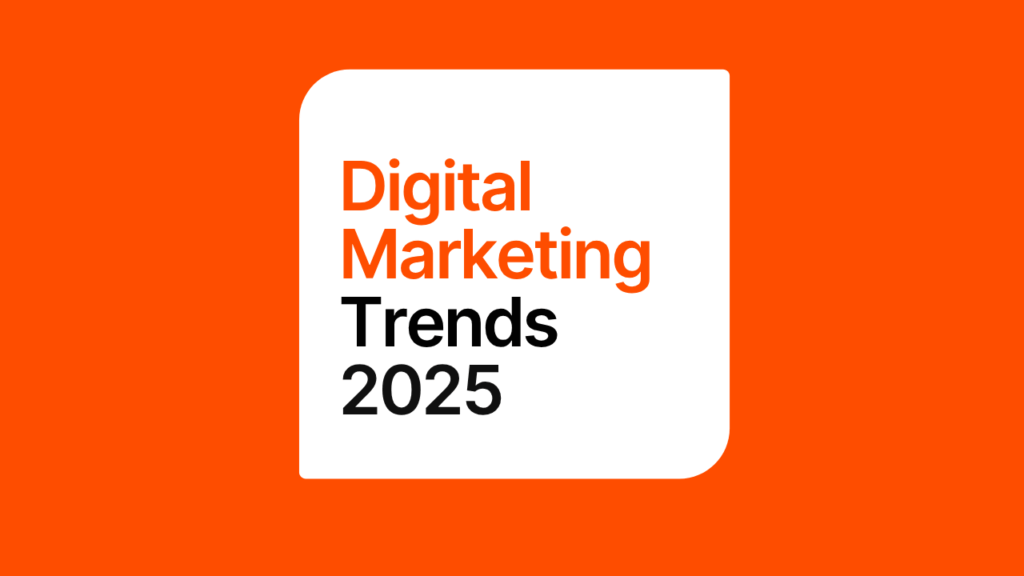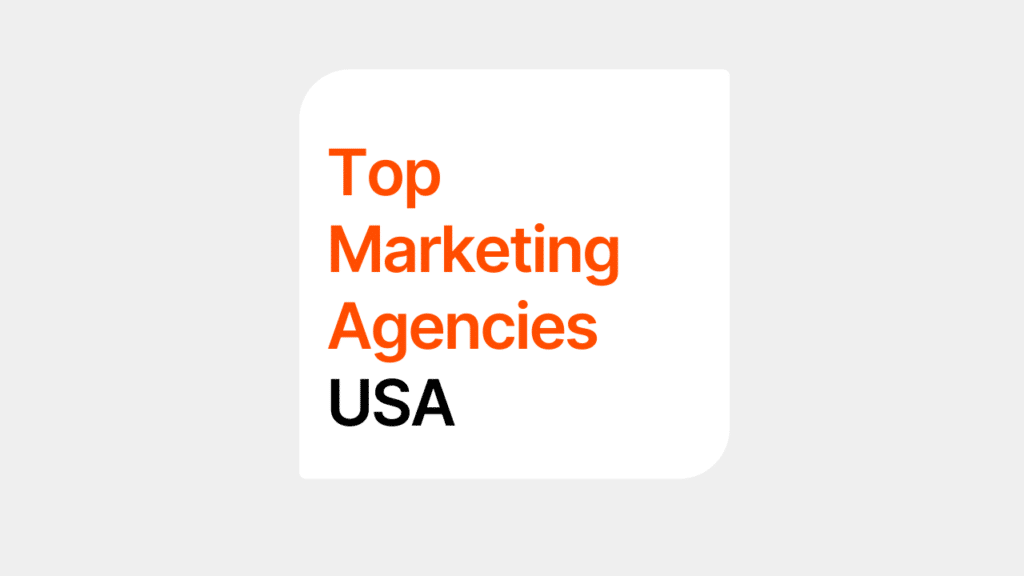
Annabelle Cochrane
SEO Manager at Digital Nomads HQ
What if we told you that email remains consumers’ number one preferred communication channel – Yet most businesses still struggle to get their email marketing right, or worse, don’t leverage email marketing at all!
Saying this, the challenge isn’t for a lack of trying…
Email marketing doesn’t have to be complicated, and many do overcomplicate the channel. Keeping it “simple stupid” may be the best way to at least start your campaign.
You’ve probably experienced this frustration: designing what looks like the perfect campaign, only to discover it appears completely different in your recipients’ inboxes, or email platforms not having the ability to build your beautifully created mailer into a functional email to send…
All of these are common problems, and you’re not alone!
So, how do you maximise your email campaigns, generate a return and not have hours and hours just going down the drain?
Here's what separates successful email campaigns from the rest
A data-driven strategy paired with the right tools.
Personalisation becomes your secret weapon—you need to nail this element in every single campaign.
Most importantly, knowing how to read your campaign performance data gives you the insights needed to improve future results.
We have put together a guide that walks you through proven email marketing strategies that create engaging, compliant, and high-converting mailers.
Think of it as your email strategy or roadmap to building a solid foundation & start getting some results — These actionable tips will work now and will continue working beyond 2025.
Build a Strong Email Marketing Strategy
Most marketers know what email marketing is…
So what’s the real challenge?
Creating a strategy that can deliver results (leads, sales or actions) for your business.
Success starts from a solid foundation.
You can’t just send emails and hope for the best—you need a framework that guides every decision you make to guide every decision your recipient makes.
Start by defining your campaign goals
Marketers who spend time and clearly define goals achieve better results, yet only one in four actually identify their objectives before planning begins.
Your email marketing goals should align with your business objectives – Planning to increase company revenue by 10%? Your email strategy should support a sales-driven strategy to drive additional spend or repeat customers to increase that revenue.
Here are a few common email marketing goals to start you off;
- Growing your subscriber list (aim for 22.5% annual growth to offset natural list decay)
- Improving engagement rates across all campaigns
- Driving revenue (trigger-based emails can increase revenue by 24 times compared to traditional campaigns)
- Reducing cart abandonment rates
- Increasing customer lifetime value
Make your goals SMART—Specific, Measurable, Achievable, Relevant, and Time-bound. Instead of “improve open rates,” set concrete targets like “Increase email open rates by 10% within six months”.
Understand your target audience
You can’t create effective emails without knowing who you’re talking to. Understanding your audience enables personalised messaging that allows you to address the recipient directly, improving engagement and ultimately improving your results.
Start with the basics: demographic data (age, gender, location, income) and psychographic characteristics (interests, attitudes, lifestyle).
Then dig deeper into behavioural data—website visits, email opens, click-through rates, and purchase history reveal what content truly connects with your audience.
"Around 77% of marketers have seen an increase in email engagement rates over the past year."
Source: https://www.hubspot.com/
Then work on strong segmentation of your database!
Segment your audience based on:
- Past email engagement patterns
- Interests and stated preferences
- Previous purchase behaviour
- Website pages they’ve viewed
- Geographic location
Effective segmentation allows you to deliver highly relevant content to different groups, creating stronger connections and higher conversion rates.
Example: If you have a consumer who has previously purchased “Women’s fitness clothing” and has continual web page visits to this same category across the website, then delivering promotional activities when “Women’s fitness wear” is next on sale would be ideal for this consumer.
Choose the right email marketing tools and platforms.
The right platform streamlines your workflow while providing features that actually help you reach your objectives.
Before evaluating platforms, define what you need—lead nurturing, e-commerce sales, customer retention, or brand awareness. This clarity helps identify which features matter most for your specific situation.
Take advantage of free trials and demos to evaluate usability, automation capabilities, and analytics tools firsthand. Research user feedback and case studies to understand real-world performance.
Essential platform features:
- Analytics tracking open rates, click-through rates, conversion rates, and other key metrics
- Mobile-friendly email templates
- Automation capabilities that save time
- Segmentation tools for targeted messaging
- Integration with your existing business systems
Think about scalability!
As your business grows, your email marketing needs evolve. Choose a platform that handles increasing email volumes, expanded segmentation requirements, and advanced automation without performance issues.
The foundation you build today—clear goals, audience understanding, and the right tools—determines whether your email marketing delivers measurable results for your business.
To help you out, we have put together an article covering some of the best email marketing platforms
Grow and Segment Your Email List
Quality beats quantity every time when it comes to email lists.
Email works because recipients want to hear from you—that’s what sets it apart from other digital channels. The numbers back this up: 77% of organisations rate email as an effective tactic, making list growth and segmentation critical to your marketing success.
Use ethical list-building methods
Ethical list building is the building of your email database in compliance… this isn’t scraping the internet and sending unsolicited emails without consent.
Proven list-building strategies worth implementing:
- Content offers – Create valuable lead magnets like free PDFs, e-books, or video series that visitors receive in exchange for their email address
- Strategic pop-ups – Deploy well-timed notifications after specific actions, such as hovering over the exit button
- Social media integration – Convert loyal social followers into email subscribers through profile links and targeted campaigns
- Double opt-in – Send confirmation emails requesting subscription verification, ensuring genuine interest
Transparency matters, especially with your data practices and privacy policy.
Avoid purchased email lists or rented lists
Purchased lists might look like a shortcut, but they create serious problems that can seriously damage your email marketing efforts.
These lists harm your sender reputation and deliverability, exactly the opposite of what you want to achieve, and often, these tactics are short-sighted for businesses.
Here’s why purchased lists backfire:
Outdated addresses create high bounce rates and spam complaints that damage your IP credibility. Using purchased lists violates regulations like GDPR in Europe and CAN-SPAM in the United States, potentially leading to significant fines, up to 20 million euros or 4% of annual global turnover under GDPR.
Most importantly, unsolicited emails, as mentioned earlier, typically result in recipients unsubscribing and marking messages as spam.
Email clients like Gmail continue developing new algorithms to filter out unwanted messages, making organic list growth your only sustainable approach.
Focus instead on building genuine relationships through value-driven content and transparent practices. This foundation of trust delivers higher engagement and conversion rates in your email campaigns.
Design Emails That Convert
Your email design can quickly make or break your conversion rate.
You could have the perfect strategy and a high-quality subscriber list, but a poor design will kill your results every time.
The reality: email design isn’t just about looking pretty — it’s about guiding recipients toward the action you want them to take.
Use responsive and mobile-friendly templates
First thing to remember: More than 50% of emails get opened on mobile devices. That statistic alone should change how you approach email design.
Responsive design adapts your email layout across different devices while maintaining both style and usability – perfect for a good customer experience.
Without it, your subscribers face the frustration of horizontal scrolling or squinting at microscopic text—both guaranteed ways to lose their attention.
Choose email templates built specifically for mobile viewing. These typically use single-column layouts that automatically stack content elements on smaller screens, and “Expert tip” Keep your font sizes readable: 22px minimum for headlines and 14px for body text.
Write compelling subject lines (make it creative)
Your subject line and pre-header text work together as your email’s “first impression.” Think creatively, this is the first interaction the recipient will see and is the key driver to whether they will even open your email. Get this wrong, and your carefully crafted content never gets seen.
Keep subject lines under 40 characters for mobile visibility. For pre-headers, stick to 100-140 characters, putting the most important information in the first 50 characters.
Effective email subject lines should:
- Create urgency without being misleading
- Include personalisation when relevant (names or location)
- Use numbers or data points when appropriate
- Ask questions that spark curiosity
Think of your pre-header as your subject line’s supporting act—don’t repeat the same information. Instead, use this space to add complementary details that encourage opens.
"Over 50% of all emails are opened on mobile devices. This underscores the critical need for mobile-optimised email design."
Source: https://www.campaignmonitor.com/
Include clear calls to action
Generic “click here” buttons aren’t optimal and often lead to a lower click-through rate. Your CTA should tell subscribers exactly what happens when they click – Tip: Keep your CTAs descriptive but short, ideally 2-3 words.
Additional Insight: Emails with two or three CTAs typically generate the highest click rates. More than that, you start seeing diminishing returns.
Balance visuals and text
The “60/40 rule” exists for good reason—aim for 60% text and 40% images to optimise both deliverability and engagement. This balance ensures your message gets through even when email clients block images.
Include at least 400 characters (roughly 60-100 words) of text in your email body. For images, compress files to reduce loading times while maintaining quality. Stick to 400-650 pixels wide for standard images, with full-width images at 1200 pixels for retina displays.
Add alt text for accessibility
Alt text serves multiple purposes—it helps visually impaired subscribers using screen readers, provides context when images don’t load, and improves overall accessibility.
Without alt text, recipients with images blocked see blank spaces where your visuals should appear.
Keep alt text descriptions under 125 characters and consider the image’s context. Functional images need descriptive alt text, while decorative images can use null alt attributes. This small addition significantly improves both accessibility and user experience.
Measuring Campaign Success
But how do you measure the success of an email marketing campaign? There are many methods and tools that can be used to determine the success of a campaign. It is important that the data collected from previous emails that have been sent out is used to make changes and improve future campaigns.
Data-driven decisions must be made to alter and optimise the content of future emails, to hopefully increase the open rate and link clicks observed within analytics.
Run A/B tests on subject lines and CTAs
A/B testing compares two versions of an email to determine which performs better. Start with a clear hypothesis about what element might improve performance. For example, you might try altering the subject line of an email and maybe even personalising it to include the recipient’s name. Other changes that could be made might include changing the placement or colour of the CTA button. This could potentially have an effect on click-through rate.
A/B testing guidelines:
- Test only one variable at a time to identify exactly what drives results
- Use a sample size large enough for statistical significance (aim for at least 100 recipients per variation)
- Send tests at the same time of day to eliminate timing variables
It is important to allow sufficient time for meaningful data collection before analysing data and drawing conclusions.
Track open rates, CTR, and conversions
Which metrics should you be paying the most attention to? While open rates traditionally indicated engagement levels, Apple’s Mail Privacy Protection has made this metric increasingly unreliable.
Due to this, the click-through rate or CTR is now the most important metric to pay attention to when it comes to measuring engagement.
CTR measures the percentage of recipients who clicked links in your email, providing direct insight into content engagement. The average email marketing CTR sits at approximately 2.3%. rates then display that one step further, showing how many people completed the desired action after clicking the CTA in an email.
Conversions are extremely valuable when it comes to measuring ROI on email marketing campaigns.
Use data and results to improve future campaigns
Taking note of previously identified patterns can work to drive continuous future improvement and therefore a larger ROI.
Many small businesses also find comparing their own data and statistics with industry averages quite effective in determining what they should implement in future campaigns.
Once A/B tests have been run and data has been evaluated, changes can then be made to the subject line, structure or CTA of the email, for example, depending on what was observed as successful throughout the testing process.
Your Email Marketing Success Starts Now
Email marketing remains one of the most powerful digital communication channels available to businesses. Identifying relationships between the structure of your emails and customer engagement through analytics is the first step to creating compelling email marketing campaigns.
Design elements make or break your campaigns. Mobile-friendly templates, compelling subject lines, and strategic CTAs work together to create emails people want to open. Smart text-to-image ratios and proper alt text ensure your messages reach everyone.
Quality beats quantity every time when it comes to your contact or email list. Ethical list-building means engaged subscribers who will drive real results. Segmentation based on demographic, geographic, psychographic and behavioural factors will lead to higher CTR and therefore ROI.
Compliance protects your reputation and ensures deliverability. Following regulations and best practices keeps your messages reaching the inbox rather than the spam folder.
The email landscape will keep evolving, but these fundamental principles remain constant. These strategies work now and will continue working as technology advances.
Start implementing these techniques today. For more information or support, contact our friendly team here at Digital Nomads HQ. Our digital marketing specialists are experienced in email marketing and can help you kickstart your journey today.
FAQs
Q1. What are the key elements of successful email marketing? Successful email marketing relies on several key elements, including personalisation, clear goals, audience segmentation, compelling design, mobile optimisation, and data-driven optimisation. These components work together to create engaging and effective email campaigns.
Q2. How can I improve my email open rates? To improve email open rates, focus on crafting compelling subject lines, personalising content, optimising send times, maintaining an updated email list, and consistently delivering valuable content to your subscribers. Regular testing and analysis of your campaigns can also help identify what resonates best with your audience.
Q3. Is email marketing still effective in 2025? Yes, email marketing remains a highly effective marketing channel in 2025. With advancements in personalisation, automation, and interactive content, email continues to offer excellent ROI and engagement opportunities for businesses across various industries.
Q4. What are the best practices for personalising email marketing campaigns? To personalise email marketing campaigns and keep contacts engaged, segmentation can be implemented. This means that different contacts might receive different content depending on their age, where they live or their interests.

"Inside the agency" A Digital marketing podcast
Tune in to our weekly Youtube and Podcasts discussing industry changes, news & hot topics across all digital marketing channels.







